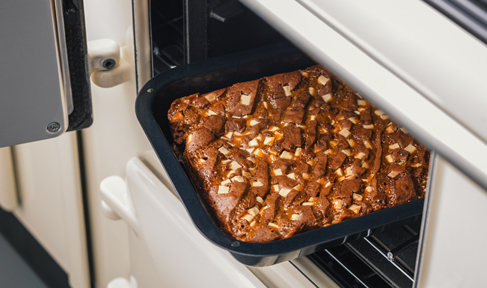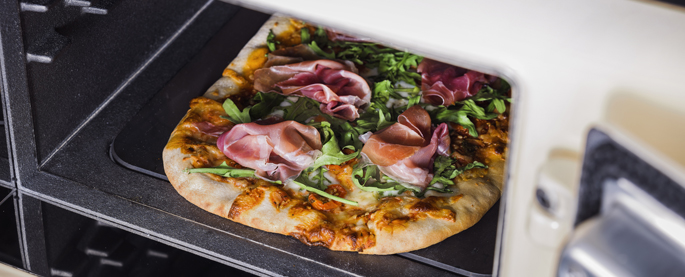AGA Baking Hints
Baking is like any other skill, don’t be frightened of trying, read the instructions (recipe) and particularly with baking, weigh the ingredients!
Use baking as a fun learning experience for younger children, they can practice their reading on the recipe, measure out the ingredients and the tin to begin to understand numbers, how to wash their hands, importance of food hygiene.
Baking is like magic, what goes into the oven is a pale flat mixture what comes out is a risen, golden brown transformation. The benefits of the indirect radiant heat of a cast iron oven mean food is not dried out.

For older children cooking forms the basis of an important life skill, it can also prompt conversations; where food comes from (helping with geography), how food is grown, what is grown in your area, what farms are and the environmental role.
Get children involved, ask what they would like to cook and why, also don’t forget their participation in clearing up!
Supervision and safety is the adult role, making sure youngsters respect hot baking trays and sharp implements.
Invest in some good oven gloves – the AGA Gauntlets and Double Oven Gloves have a steam and grease barrier for greater protection. My pet hate are damp towels and tea towels grabbed to handle hot tins, heat just gallops through these.
When baking a cake the size of tin in the recipe is important, a smaller size than the recipe means the mixture is deeper so will take longer to cook, a larger tin than the recipe will give a shallower cake which will cook quicker.
Bake pizzas to cook on the floor of the Roasting Oven for good base browning. If making your own sprinkle some semolina or flour onto the AGA Pizza Paddle so it easily slides off. Alternatively place the dough onto a circle of Bake-O-Glide then onto the floor of the oven.

Baking pastry tarts or quiches? There is no need to bake blind, just cook on the floor of the Roasting Oven complete with the filling. (AGA eR3, eR7 Series, AGA Total Control and AGA 60 owners use the floor grid).
How to make plain flour into self raising flour? Just add baking powder! As a rule of thumb use a teaspoon of baking powder to 225g plain flour.
Baking powder is a mixture of cream of tartar and bicarbonate of soda in a ratio of 2:1 (two parts cream of tartar to one part bicarbonate of soda). Mix well together and sift with the plain flour a couple of times. The raising capabilities are activated when they come into contact with the added liquid ingredients so cook the recipe as soon as it is made. Store in an airtight container.
If following a specific recipe use the recommended amount of baking powder or raising agent for that recipe, for example scones very often use self raising flour plus another teaspoon of baking powder.
You can make yeast bread with plain flour, however the texture will be a little different – this is because ordinary flour does not contain as much gluten (a protein) as strong (bread) flour, gluten gives structure to bread.
If you are following an American recipe then all-purpose flour is plain flour.
Buckwheat flour is gluten free and is used in pancakes, biscuits and cakes.
Chickpea flour or gram flour is made from pulses and can be substituted up to half the amount of plain flour used in a recipe. The street vendors of Nice in the south of France sell pancakes made with chickpea flour called Socca.
Dawn Roads
AGA Specialist
